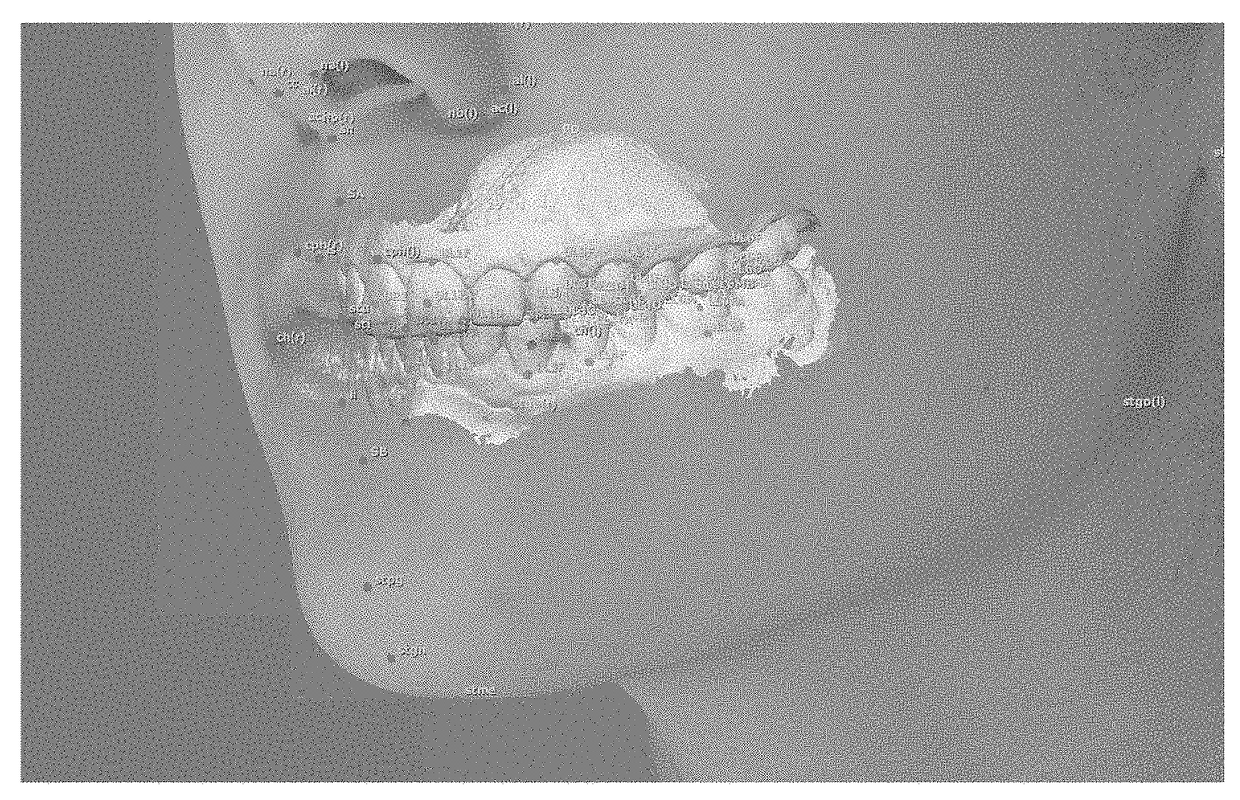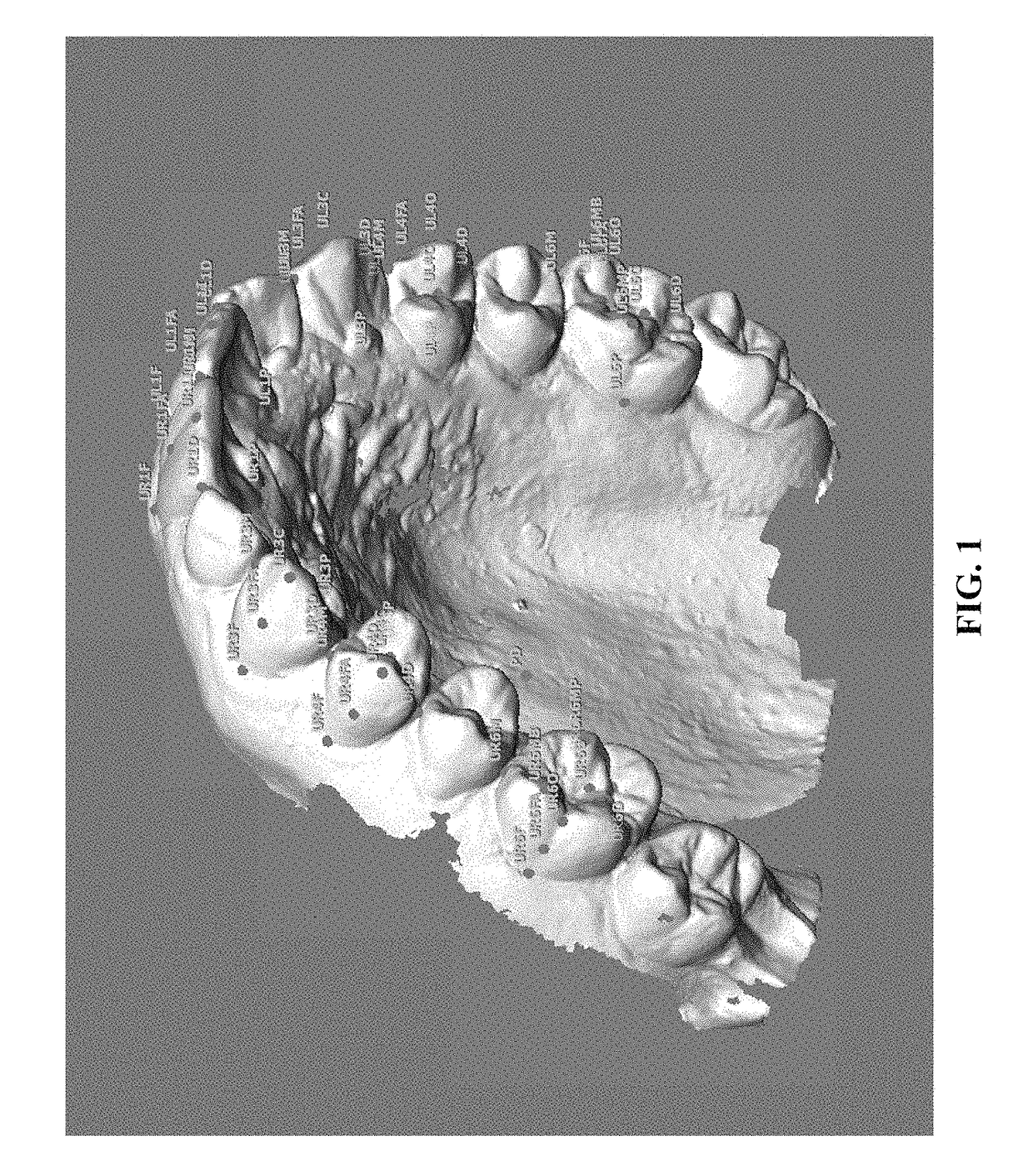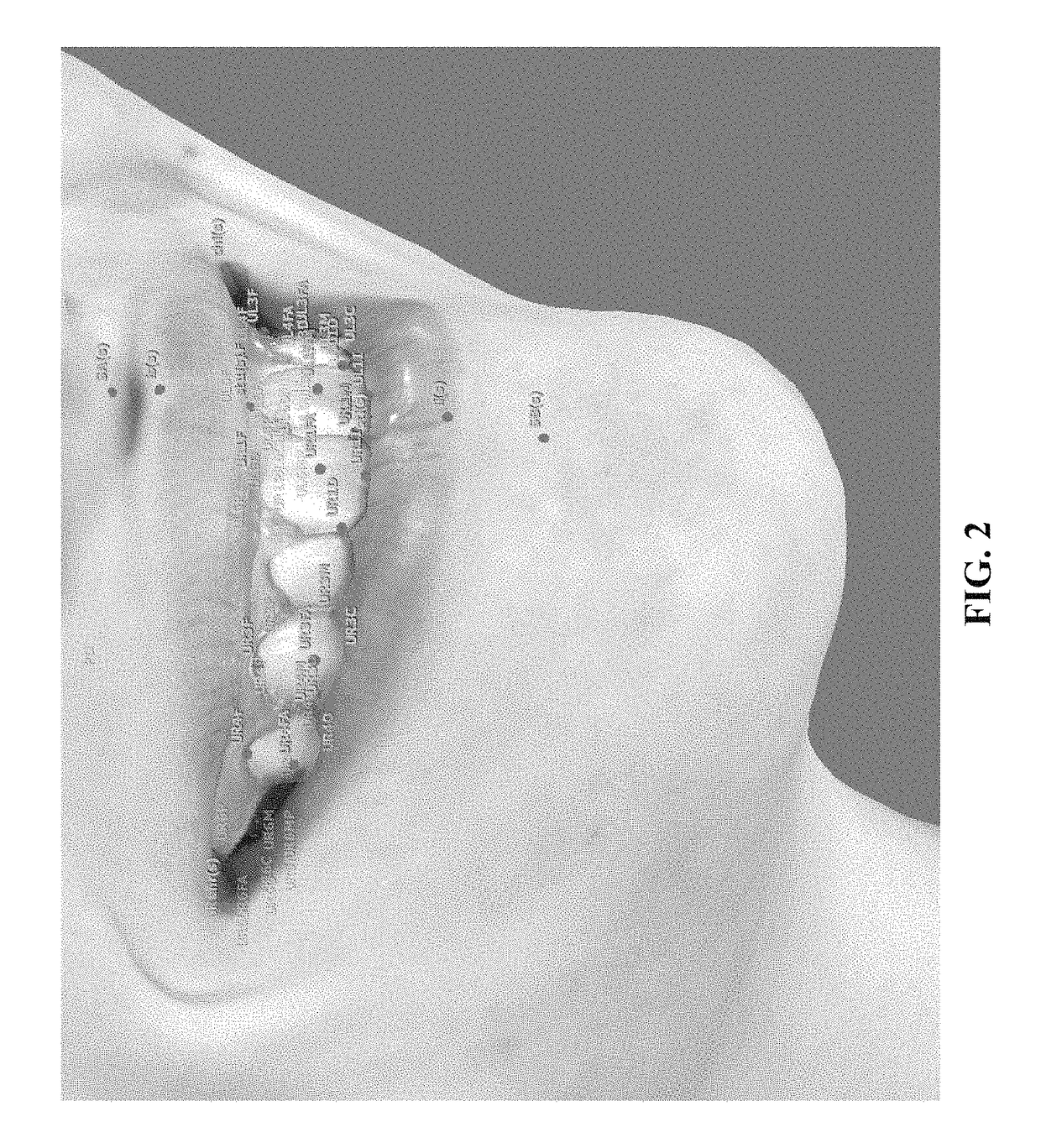3D dentofacial system and method
a dentofacial and 3d technology, applied in the field of facial and dental features evaluation methods and systems, can solve the problems of insufficient use of cephalometric films, inability to justify difficulties and costs of their use in clinical practice, and inability to accurately record information obtained from cephalometric films. to achieve the effect of evaluating progress and outcomes
- Summary
- Abstract
- Description
- Claims
- Application Information
AI Technical Summary
Benefits of technology
Problems solved by technology
Method used
Image
Examples
examples
[0078]FIGS. 12, 15 and 16 show the face and teeth of an orthodontic patient with a palatally displaced upper left lateral and incisor buccal segments that are more class II on the left side. Table 8A shows an example of an analysis comparing the patient's values to the reference standard values. The comparison shows that the patient has slightly protrusive upper and lower jaws with average vertical and transverse relationships. For example, the Maxillary Lip Position was 3.7 standard deviations greater than the norm. The upper incisors are two standard deviations greater than the standard and the lower incisors are only one standard deviation more proclined than the standard. This is indicated by Maxillary Incisors (distance and angle) being 2.8 and 2.1 times the standard deviation from the norm, respectively. In accordance with some embodiments of the invention, an orthodontist could seek to treat this condition, for example, by extracting the first upper premolars to reduce the pr...
PUM
 Login to View More
Login to View More Abstract
Description
Claims
Application Information
 Login to View More
Login to View More - R&D
- Intellectual Property
- Life Sciences
- Materials
- Tech Scout
- Unparalleled Data Quality
- Higher Quality Content
- 60% Fewer Hallucinations
Browse by: Latest US Patents, China's latest patents, Technical Efficacy Thesaurus, Application Domain, Technology Topic, Popular Technical Reports.
© 2025 PatSnap. All rights reserved.Legal|Privacy policy|Modern Slavery Act Transparency Statement|Sitemap|About US| Contact US: help@patsnap.com



